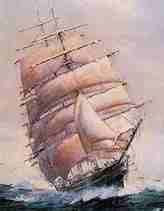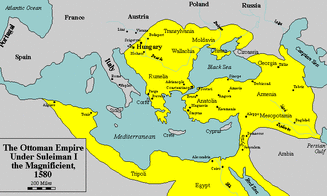Unit 3: 1450 - 1750

In the post-classical period (600-1450 C.E.) you studied the rise of new civilizations in both hemispheres, the spread of major religions that created cultural areas for analysis, and the expansion of long-distance trade. During the time period between 1450 and 1750 C.E., the Eastern and Western hemispheres were linked and for the first time resulting truly worldwide trade and cultural, political and social changes that can be seen in the modern world.
In this unit we will explore:
Cultural and Intellectual Developments in Europe
Early Exploration
In this unit we will explore:
Cultural and Intellectual Developments in Europe
- The Renaissance, The Reformation, The Scientific Revolution and the Enlightenment and their impact on Europe and beyond.
Early Exploration
- How technological innovation, religious and financial motihhves stimulated colonial expansion in the Americas and its long lasting effects on the region as well as its impact on global trade, Africa and Europe.
- Ming China and the outside world and the French and English in North America.
Major Empires: 1450 - 1750

- The rise of sea based empires from Europe; the Spanish, Portuguese, French and British and their methods of political and imperial control.
- The land-based empires of the eastern hemisphere. The era between 1450 and 1750 saw the appearance of several land-based empires who built their power on the use of gunpowder: the Ottomans and the Safavids in Southwest Asia, the Mughals in India, the Ming and Qing in China, and the new Russian Empire. All had huge land armies armed with guns.
- Tokugawa Japan, the sea based 'gunpowder' empire.
Demographic and Environmental Changes
Demographic changes between 1450 and 1750 were significant. Some major population shifts included:
- A rise in the population of Europe - Europe's population had been decimated by the Black Death, so during the 15th and 16th centuries population levels were growing to match previous levels. In 1000 C.E., Europe had an estimated 36 million people. In 1700 the population had grown to 120 million, the largest percentage increase of any of the continents.
- A decrease in the population of the Americas - Due to the decimation of Amerindian populations by their encounters with Europeans. By 1700 the entire western hemisphere had only 13 million, a decrease from 67 million or so in 1500. Even though Europeans had settled in both North and South America by 1700, their numbers were too few to make an overall demographic difference.
- The Columbian Exchange almost certainly caused some environmental changes. For example, deforestation occurred as the Europeans cut down forests in the Americas to make pastures for the cattle they brought, and deforestation accelerated when more areas were cleared for plantations. Continuous Cash Crop Farming of one particular crop on plantation style farms also let to soil exhaustion in some areas.
- In North America, shipbuilding in the northern English colonies took its toll of forests. Deforestation was also taking place in Europe during this period. Timber was needed for ships, buildings, wagons, barrels, and many other items.
Review Materials
|
| ||||
|
Have a go at completing this CCOT chart - it has been started for you, can you finish it?
|
| ||
